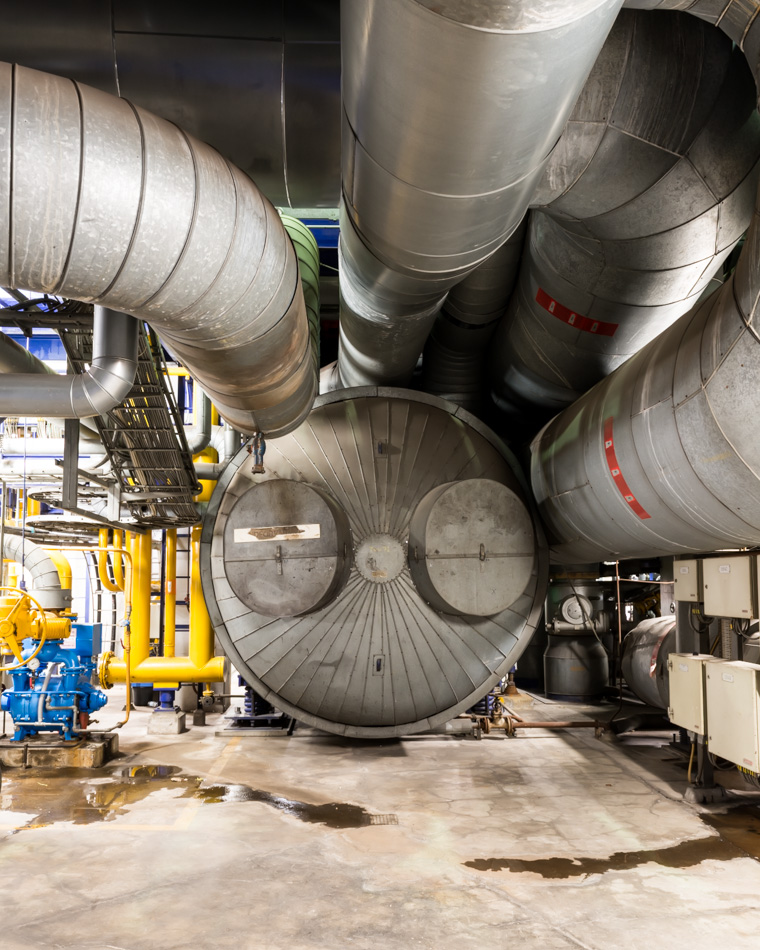H.C. Ørstedsværket is a natural gas fired power station in Copenhagen. Built between 1916 and 1920, the power station became the largest in Denmark and was the first to use alternating current technology as opposed to direct current. That meant that it could be built further away from the places the electricity was needed, and so the power station was located in the southwest of the city close to the Vesterbro area. H.C. Ørstedsværket provided enough power to supply the whole of the Copenhagen area with lighting, and reduced the previous three power stations in Copenhagen to backup stations.
The power station has undergone numerous developments during it's lifetime, notably in 1932 when a gigantic diesel engine built by Burmeister and Wain was installed. This was the largest diesel engine in the world, and remained so for 30 years - it is situated in a separate building and has now been turned into a museum that is open to the public. In 1994 the power station underwent another huge development when it was converted from using coal and diesel, to using natural gas, and to providing district heating rather than power.
One of the most amazing things I found at H.C. Ørstedværket was the old control room from the 1930's - a 60m2 room with walls lined with banks of pale green and black analogue switches, which controlled the power to the whole city. And I bet you didn't know that Skoda made massive turbines for power stations did you?
This is shot as part of a larger project about the power stations of Copenhagen, so stay tuned for more and check out previous installments such as Svanemølleværket Power Station, Vestforbrænding Incineration Plant and Amagerforbrændning Incineration Plant.









